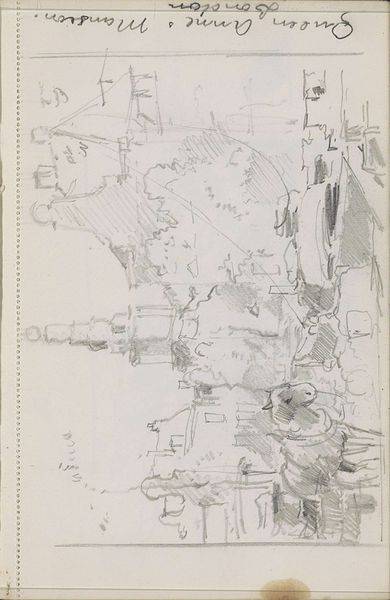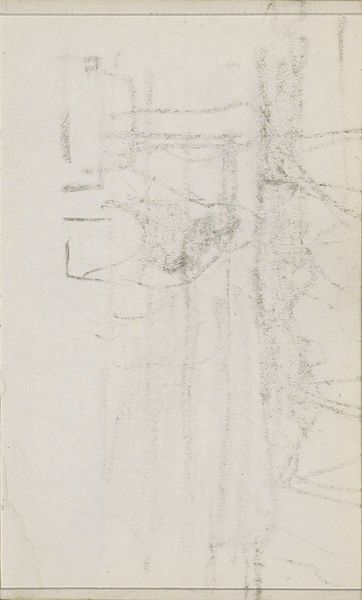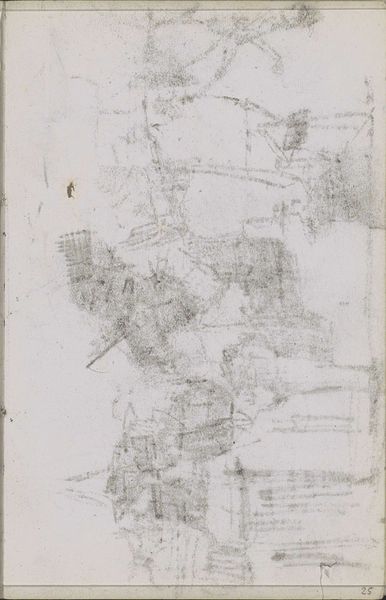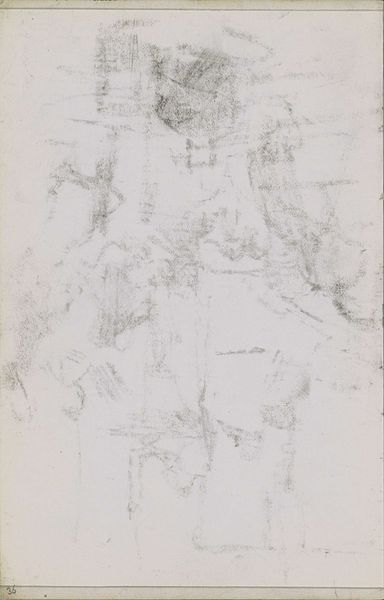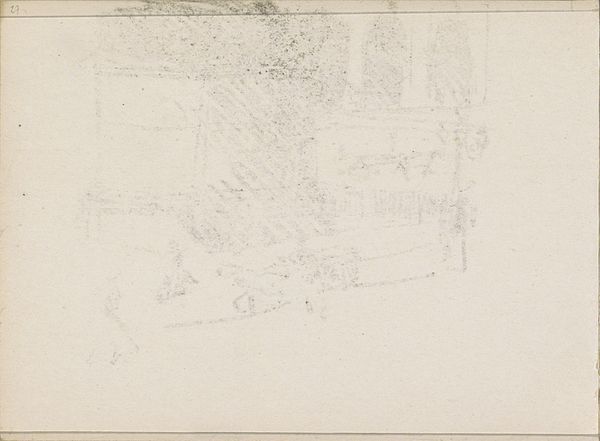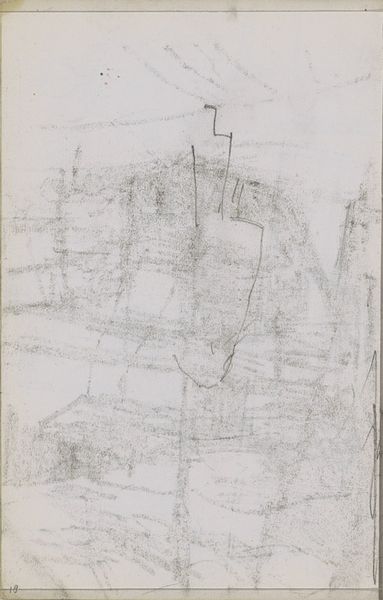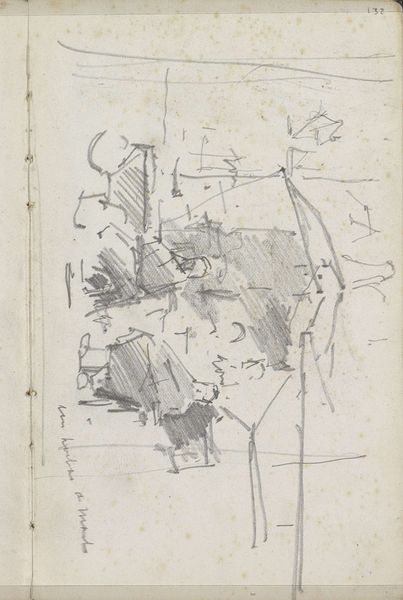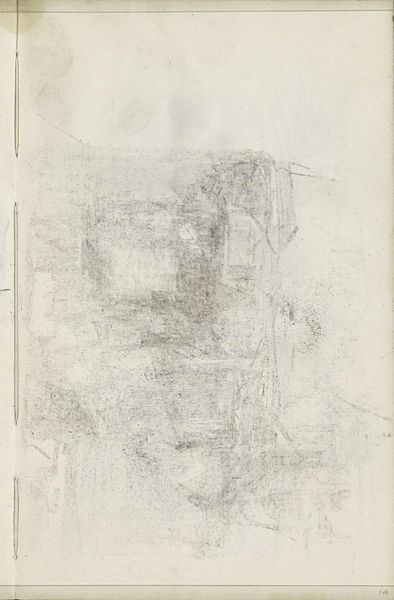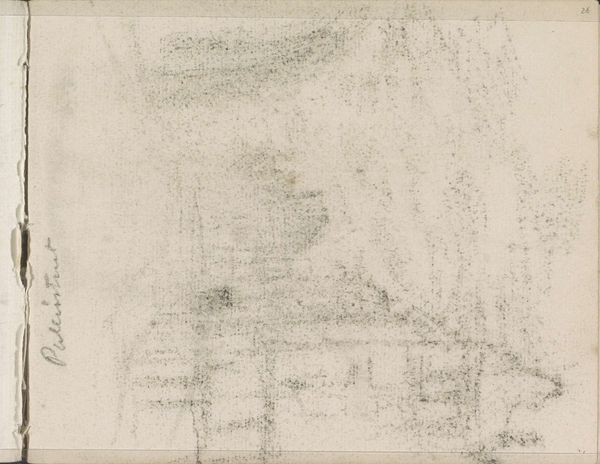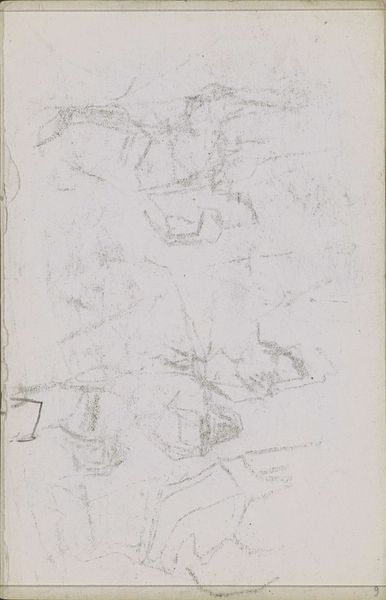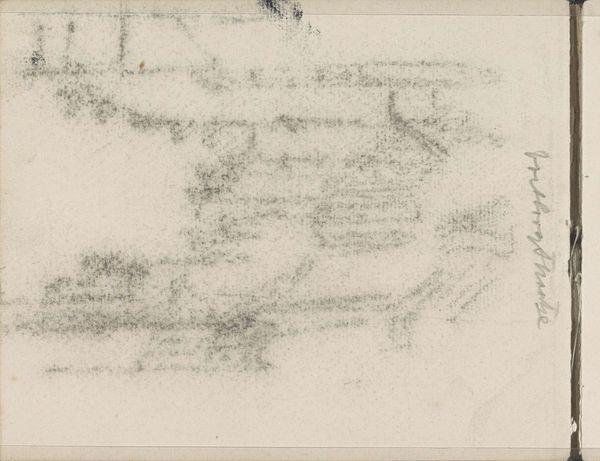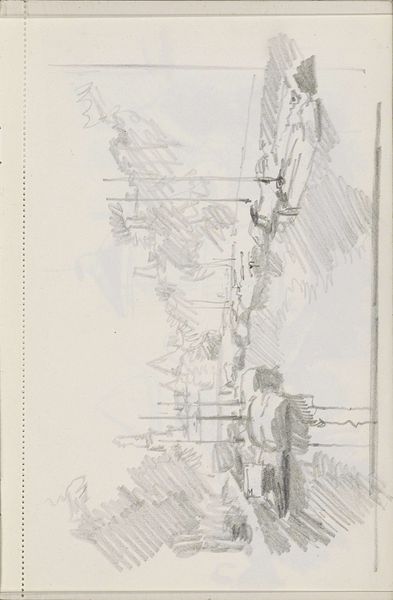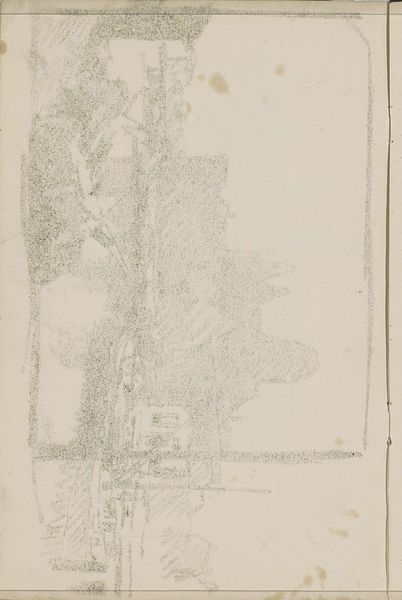
Copyright: Rijks Museum: Open Domain
Editor: Here we have "Abklatsch van de krijttekening op pagina 17," a pencil sketch by Isaac Israels, created sometime between 1875 and 1934. There's something fleeting and almost ghostly about the figures; they seem caught between presence and absence. How do you interpret this work in its historical moment? Curator: That sense of the ephemeral is key, and considering its moment helps. The late 19th century saw an explosion in the popularity of sketching, fueled by readily available materials and the rise of Impressionism. These weren’t necessarily finished works for public display but rather personal studies, glimpses into everyday life. Editor: So, it's more about the process than the product? Curator: Exactly. The "Abklatsch"—the tracing—further emphasizes that. It is, in essence, a copy of a drawing, distancing it further from the ‘original’ moment of observation. Does that influence your perception of its 'authenticity', its value? Think about how the market decides on value – scarcity is usually a key element. Editor: I hadn’t thought about it that way. I was focusing on the figures themselves and trying to place them. But what you’re saying suggests the value lies in the artist's process and how the art world at the time saw those process. Curator: Precisely. It’s also interesting to consider the location of the piece today: the Rijksmuseum. How does being housed in such an institution shape its meaning now? Editor: It elevates it, gives it importance. Curator: Yes, transforms a casual sketch, perhaps never intended for public view, into a significant artifact within a national narrative of art history. We're projecting present-day value systems onto it. Editor: It's amazing how shifting the perspective, considering it in terms of artistic process and institutional framing, changes how I see it. Curator: That is often the case. And it goes to show how cultural and historical context plays such a critical role in understanding works of art.
Comments
No comments
Be the first to comment and join the conversation on the ultimate creative platform.
